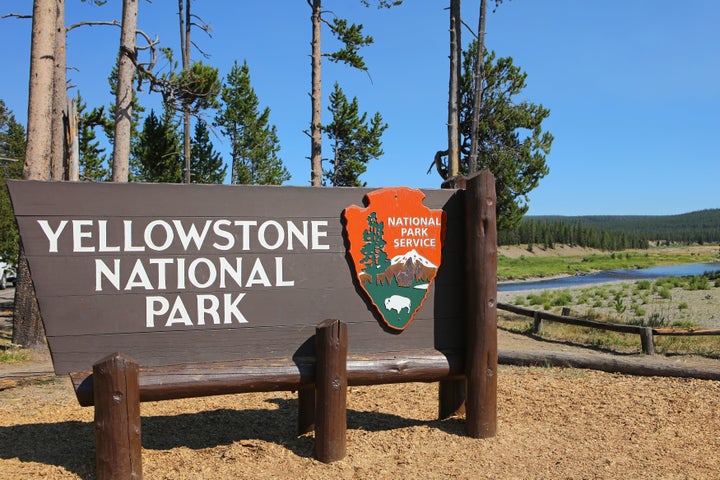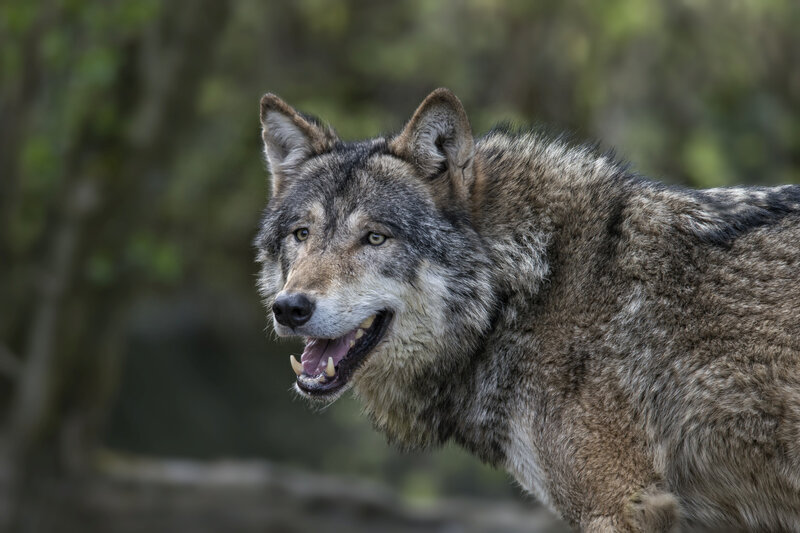 |
| A mother grizzly bear and her cubs |
State officials from Wyoming have recently agreed to the state's first grizzly bear trophy hunt in more than four decades, which will allow killing of 23 bears this autumn. The unified vote by the state's Game and Fish Commission came less than a year after the bear population in and around Yellowstone National Park was stripped of federal protection under the Endangered Species Act (ESA). The hunting season, which is set to open in September, would allow one authorized hunter at a time to harvest up to eleven bears, including one female, in a core bear habitat area outside Grand Teton and Yellowstone National Parks called the Demographic Monitoring Area. In addition, another twelve bears, either male or female, can be harvested outside that area. Although the bears remain protected inside Yellowstone, they are under threat of hunting when they venture outside the park area in the states of Idaho, Montana, and Wyoming. According to the state wildlife department's manager of large carnivores Dan Thompson, the management project is "conservative" and is based on years of scientific study of Yellowstone's grizzly population. The commissioners did not discuss much ahead of the vote.
 |
| Yellowstone National Park sign |
Ever since federal authorities announced that Yellowstone's grizzly bears no longer need federal protection in June 2017, more than a dozen American Indian tribes and activists sued the federal government that month, asserting that removing the bears from the ESA protections would abuse tribal religious beliefs. In August of that year, the Northern Cheyenne Tribe and several nonprofit conservation organizations such as the Center for Biological Diversity and Sierra Club, registered a separate complaint in an effort to bring back ESA protections for the bears. Among those who forced Wyoming commissioners not to approve the hunt was Bonnie Rice of the Sierra Club indicating that the bears are "the essence of wildness and they're the soul of the Greater Yellowstone Ecosystem. Even though Yellowstone's grizzly population has recovered, conservationists are concerned about the threat of climate change and hunting could critically impact the bears' long-term survival since they have a very slow reproduction rate. Furthermore, the seeds of the whitebark pine, a tree that has been greatly affected by insects, disease and climate change, are an essential source of food for Yellowstone's grizzlies. According to Northern Rockies regional director for the National Parks Conservation Association, Bart Melton, Wyoming "ignored its residents' concerns and national park supporters across the country by approving its destructive grizzly hunting plan." He further added in a statement that this hunt will "result in fewer bear sightings by visitors and increased risk for future of this species that was not so long ago at the brink of extinction."
.jpg/800px-Donald_Trump_official_portrait_(cropped).jpg) |
| Under Donald Trump's presidency, the future for grizzly bears and other charismatic animals of the U.S appears bleak. |
I cannot think of anything more devastating than the federal government and the state government of Wyoming deciding the fate of charismatic animals like grizzly bears. Just because their numbers in places like Yellowstone have bounced back does not mean they are completely safe from harm. Climate change is threatening the survival of grizzly bears by devastating the survival of the whitebark pine trees, which the bears rely on for their survival. This hunting plan approved by Wyoming's Game and Fish commissioners will further affect the bears' survival ultimately reducing their population to the number of animals there were in 1975. I urge the state government of Wyoming to please not dictate how the Yellowstone grizzly bear population and populations of other wildlife in the state should be managed. I also urge the federal government to not decide how the wildlife of U.S should be managed. That is the job for conservation and environmental groups (non-governmental or otherwise), scientists, and researchers who have the knowledge and expertise on how to save threatened species and ensure their long-term survival. Furthermore, the federal and state governments should take the findings made by these groups and individuals into consideration and act upon it. This not only ensures survival of the species, but also keeps federal and state authorities in good terms with conservation and environmental groups.
View article here


